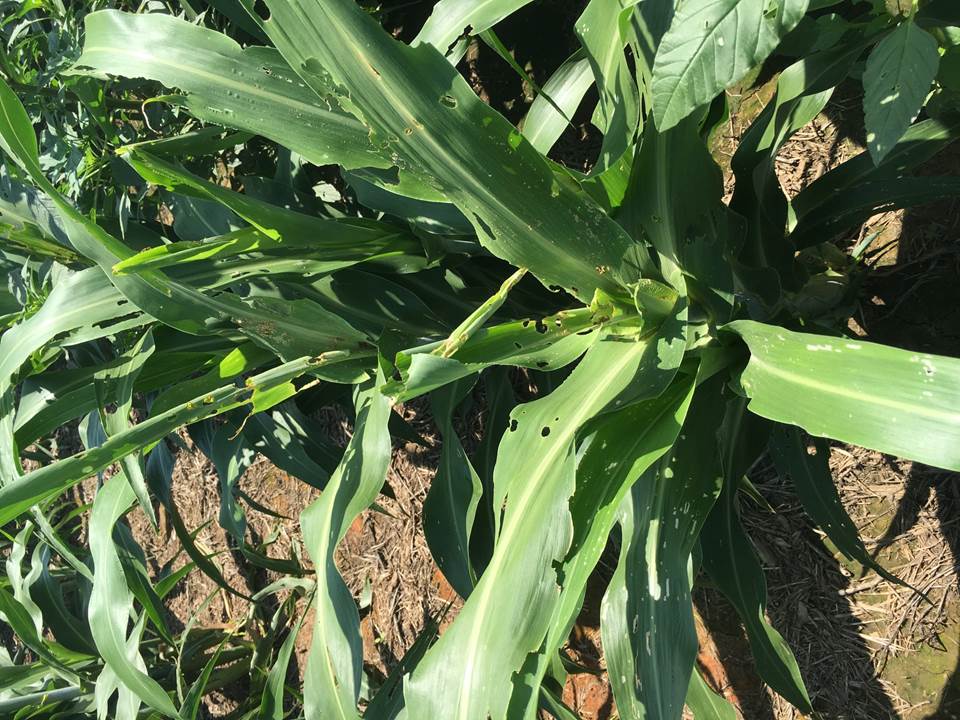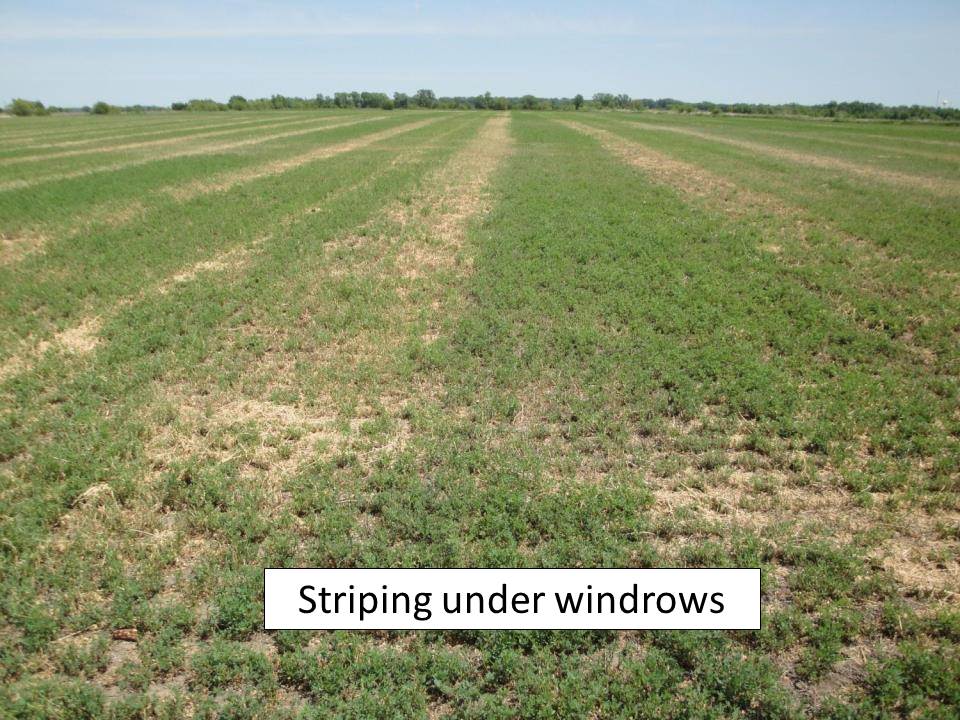–by Jeff Whitworth and Holly Schwarting
Double cropped sorghum in north central KS seems to have a significant infestation of “ragworms”. The larvae are a combination of fall armyworms and corn earworms and are of various sizes.
Leaf feeding in the whorl by either species is highly visible but should not have a significant effect on the plants or yield.
Also, most fields in north central KS are infested with aphids. Corn leaf aphids can produce a great deal of honeydew but mostly in the whorls. This honeydew may retard head extension but usually does not affect many plants over a large area.
Also found greenbugs and yellow sugarcane aphids. None of the invasive sugarcane aphids were detected in north central Kansas. However, many beneficials are, and will continue to be, present in sorghum fields as evidenced by the numerous green lacewing eggs and lady beetle eggs.





























